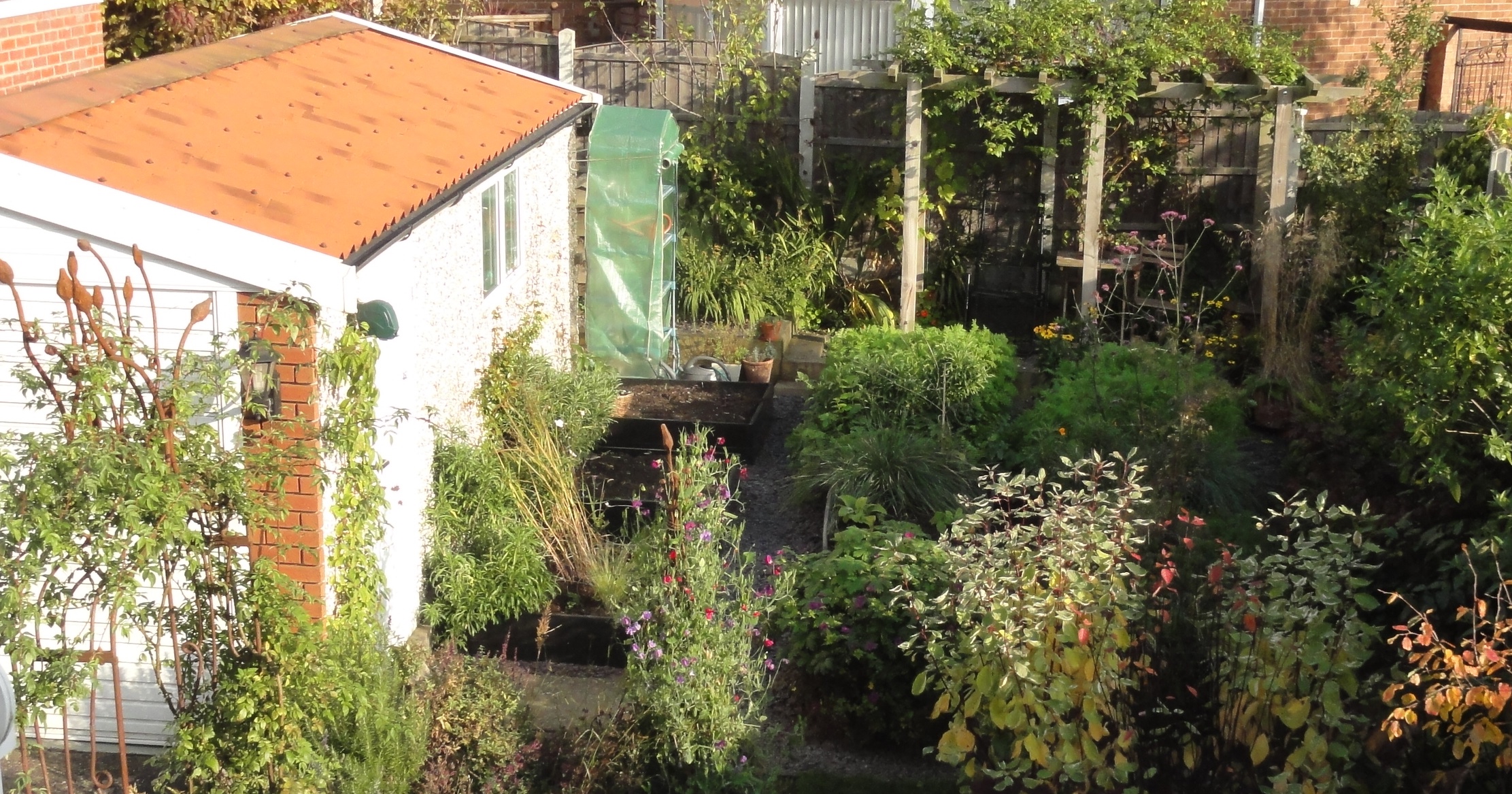This is an update of a post published in March 2016.
 Collecting rainwater and using it to water your garden is an excellent way of of making the most of a free resource. It also reduces how much rainwater is washed away into drains. Furthermore, in my case, I had a small flooding issue in one part of the garden, and water from the garage roof was adding to the problem. The garage roof was substantial, c. 20 m², and the plan was to maximise the yield of water from the garage by putting in a large rainwater collection tank, from which I could use water my garden. And I also hoped this would reduce the flooding in one part of the garden.
Collecting rainwater and using it to water your garden is an excellent way of of making the most of a free resource. It also reduces how much rainwater is washed away into drains. Furthermore, in my case, I had a small flooding issue in one part of the garden, and water from the garage roof was adding to the problem. The garage roof was substantial, c. 20 m², and the plan was to maximise the yield of water from the garage by putting in a large rainwater collection tank, from which I could use water my garden. And I also hoped this would reduce the flooding in one part of the garden.
When looking at options for putting in a rainwater collection tank, I originally was looking at standard water tanks. However, these weren't cheap (over £400 for a 1000 litre tank), and I wondered if there were any other options.
Thanks to social media I found out about IBC's. IBC stands for Intermediate Bulk Container, and they are used for transporting food products in bulk, including juice. They all seem to be 1000 litres tanks. Whilst you can buy a new IBC for £150, you can buy a recycled one for £56, plus delivery. A recycled IBC has been cleaned out so is clean for rainwater collection purposes, but no longer meets food standards so cannot be reused in the industry. So you are upcycling and getting a bargain.
A standard water butt is c. 200-250 litres, so getting in an IBC is 4 to 5 times your every day water butt. An added bonus is that a 2nd IBC can easily sit upon the 1st one, if you have the right elevation for collecting rainwater. Unfortunately I don't, so it's just the one.
Here you can see the paving stones to the left of the beehive-shaped compost bins, ready and waiting for the planned water tank. 
Water is collected from guttering on both sides of the garage, then piped to a filter point on the back of the garage. The filter is to stop leaves and other debris from getting into the tank. 
This is then taken to the IBC by another pipe, and filtered a second time before the water goes into the tank. 
Yes, that's a food sieve. I had been using it to winnow saved seeds but it was too fine, so I re-purposed it for the water tank.
And this is the result. 
The tank is now two thirds full. A hosepipe extends from the tap, making it easier do the watering.
You can purchase a tap fitting (as I did) that can then be used with normal hoses, such as Hozelock. Initially we added a shorter bit of hose pipe from which I could use to fill watering cans. Once the tank fills up to a certain point and creates enough pressure, you can add a longer hose pipe with a nozzle to use for watering like you would a hose from a normal tap.
I got my IBC from a company in Wrexham, DVC. Delivery was £40 and if you do get 2 containers, it's the same delivery cost. All up, including delivery and the extra piping and bits we needed, it came to £128. Much cheaper than £400.
The end result was not only a cheap and useful way to collect rainwater, but it did in fact reduce some of the flooding that had been a problem elsewhere in the garden.
rainwater collection tank in use.



Comments
December 20, 2018 00:13
I set up a couple IBCs to replace a 55 gallon barrel a few months back. One thing I was warned is that the IBC plastic is not necessarily UV-stable. It'll probably last a few years, but could start cracking if exposed to a lot of sunlight. I wrapped mine in 3mil black plastic (before putting them back in their cages) to avoid this concern.
December 25, 2018 18:42
@gdorn This is a good point, I should have mentioned this in the post. I found out this info after I had installed my IBS. I'll update my post with this so people are aware.